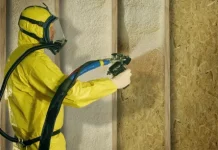Table of Contents
History of ball and socket joint
Humans are curious beings. As a result, science has become so modern ball and socket joint. But the medical science is the one that evolved first. Humans were suffering from diseases, plagues, and many more problems in the past. Therefore came forward some genius minds and invented medical science. At the beginning of medical history, it was the art of killing, not healing. But Muslim scientist Ibn Sina turned it into the art of healing. He is the first surgeon in human history to have a successful surgery. As a result, he is a legend in Anatomy studies. He is the first person to invent that human bones have ball and socket joints.
After some decades of research, doctors in China founded some more new things. In 2700-2600 BC, they wrote the very first book of the complete medical encyclopedia. They wrote “Neiching.” As a result, Chinese medication became famous all around the world. Several decades passed by Chinese medicine was still in the top tier. But in 1000 BC, an Indian Doctor, Sushruta, became the Father of Indian surgery. He was the first person in human history to take aseptic precautions before surgery so that the patient doesn’t get any septic.
Then came Hippocrates. Hippocrates is the Father of medicine. He gave guides for dissection use of a scalpel and dissected dead bodies from the battlefield. After him came Aristotle, then Galen of Pergamum, after that Leonardo da Vinci and at last the greatest at all times Andrews Vaselius. Andrews gave a detailed view of human anatomy in his notebook “De humani corpois fabrica.” modern age orthopedics still follow his guide to learn about ball and socket joint.
Human Joints ball and socket joint
The Human body has 206 bones. Every bone is joined through joints. The joints hold two bones together and allow the act of the skeleton. Doctors classify joints mainly structurally and functionally. Orthopedics classify structural class by how the bones connect. And classify functional type by the degree of movement between the bones.
Clinically there are three numerical types. If it concerns one joint, then it is monoarticular. Some joints have an attachment to two to four joints. It is oligoarticular or pauciarticular joint. Then the last is the polyarticular joint. Polyarticular joint is concerning five or more joints.
There are bone joints that have binding tissues. Bone experts define joints in structural classification. There are four structural joints in the human body.
- Fibrous joint – It is joined by dense regular connective tissue, which is rich in collagen fibres.
- Cartilaginous joint – Cartilage joins bones with joints. There are two types of joints. One is primary cartilaginous joints composed of hyaline cartilage And secondary cartilaginous joints. It connects articular surfaces of the involved bones with fibrocartilage.
- Synovial joint – It is not directly joined. The bones have a synovial cavity. As a result, they are united by the dense irregular connective tissue that forms the articular capsule. It is usually related with accessory ligaments.
- Facet joint – the joint between two articular processes. They are between two vertebrae.
Movement classification ball and socket joint
Doctors classify joints according to the type and degree of movement they allow. Primary anatomical planes reference joint activities too. There are a ball and socket joint also. There are three kinds of functional classification. Firstly comes synarthrosis. It permits little or no mobility. As a result, most synarthrosis joints are fibrous joints.
Secondly comes amphiarthrosis. Amphiarthrosis permits a little mobility. Therefore most amphiarthrosis joints are cartilaginous joints. Finally comes the synovial joint. They are freely movable. There are six kinds of synovial joints in the human body. They are plane joint, ball and socket joint, hinge joint, pivot joint, condyloid joint, and saddle joint.
Anatomy classifies joints according to the number of axes of movements they allow. They are nonaxial, monoaxial, biaxial and multiaxial. There is a further classification according to the number and shapes of the articular surfaces. They are flat, concave, and convex surfaces. Trochlear covers are also a type of articular surface.
Biomechanical classification
The biomechanical industry also classifies joints. Engineers subdivide joints into simple and compound according to biomechanical anatomic classification. Complex and combination joins are depended on the number of bones involved. Simple joint consists of two articulation surfaces. They are found in the shoulder joint and hip joint. Compound joint consists of three or more articulation surfaces. As a result, they are in the radiocarpal joint. Finally, the complex joint has two or more articulation surfaces and an articular disc or meniscus. They are like ball and socket joints. Complex joints make knee joints. Both knees have one ball and socket joint.
Synovial joints
Most joints in the human body are ‘synovial joints.’ They are movable joints. These joints contain a lubricating liquid. This liquid is called synovial fluid. Synovial joints are the predominant joint in the limbs. Because mobility is vital in these limbs, these ligaments help provide stability. Therefore, the muscles can contract to move. The most common synovial joints are the ball and socket joint, ellipsoidal joint, gliding joint, hinge joint, pivot joint, and saddle joint.
Hip and shoulder joint
Synovial joints have a special class of joints. Anatomy experts call it ball and socket joint. This joint enjoys the highest freedom of motion in the body, thanks to its unique structure. The only ball and socket joints in the human body are the shoulders and hip joints. Shoulders and hips need great motion at the end of the body’s limbs. Therefore, a vast amount of musculature needs to move and support such flexible joints.
Two main components make up a ball and socket joint. Firstly a bone with a spherical head like a ball. And secondly, a bone with a cup-like socket. The human shoulder has a joint with the humerus, the upper arm bone. The humerus fits into the glenoid cavity of the shoulder blade. The medical name of the shoulder blade is scapula.
The glenoid cavity is small. It is a shallow cavity that permits the shoulder joint the greatest range of motion in the human body. The labrum surrounds the glenoid cavity. It is hyaline cartilage. Therefore, it provides a flexible reinforcement to the joint. And muscles in the rotator cuff hold the humerus in the pit.
The other synovial joint is the hip joint. It is less mobile than the shoulder joint. As a result, it is overall more potent and more stable. The stability in the hip joint is vital. The hip joint bears the weight of the body resting on the legs. The human body performs actions such as standing, walking, and running. These actions depend heavily on the legs connecting to the hip. The hip bone has a deep socket. Doctors call it acetabulum. The hip bone or os coxa carries the whole pressure of the legs.
Most weight of the human body is distributed on this socket. The bone in the thigh is Femur. It has a rounded, almost spherical head that fits into the acetabulum. A lot of tough ligaments and muscles hold the Femur in place. They help the hip to resist some of the most potent strains in the body. The acetabulum has an ample depth. It prevents dislocations of the hip by limiting the movement of the Femur. It defines the movement of the Femur within its socket.
Ball and socket joints movement
Ball and socket joints are multiaxial joints. They can move bones along several axes. The humerus and Femur have a muscle on them. This muscle permits the humerus and Femur to move away from the body’s abduction. It can move the bones toward the body’s midline. It can also cause forward and backward movement. They can do flexion and extension.
The humerus and Femur can create circular motion in the joint. It can move around the joint in a full circle. Doctors call it circumduction. Therefore it can rotate medially and laterally around the axis. Other body parts can also move medially and laterally. But they don’t have a full round axis. So, they need the help of two different joints. The wrist and ankles are such joints. So, they need help from multiple other joints to act like the ball and socket joint.
Clinical condition
The ball and socket joint is a combination of two bones. Therefore there are chances of fracture, dislocation, or unbearable pain due to the synovia fluid defect. All this can cause damage to the ball and socket joint. There is a condition “Osteoarthritis.” It is a stable clinical condition. This condition causes unbearable pain. It happens due to the rubbing of cartilage. Sometimes due to the absence of synovial fluid.
The other condition is Rheumatoid arthritis. This disease causes long-lasting inflammation in which the joint can cause damage to the various body systems, skin, blood, etc. Doctors can determine this condition by bone erosion and deformity of the bone structure.
There is a hip condition too. The clinical name is hip dysplasia. In this condition, the acetabulum does not cover the head of the Femur. As a result, it causes hip dislocation fully or partially. Generally, newborn babies suffer from this problem.
Shoulder problems
The main shoulder problem is pain. It is one of the most common issues people visits physicians. Physicians call it musculoskeletal symptoms. The shoulder is the most flexible joint in the body. Therefore it is very unstable. It has a larger range of motion allowed. This unsafe behaviour can cause joint injuries. It leads to a degenerative process in which tissues break down and no longer function well.
Shoulder pain is generally localized. Therefore, it can cause pain to the hands too. The shoulder joint is a combination of three bones. The three bones are the clavicle, the scapula, and the humerus. The scapula contains synovial fluid. This fluid sometimes becomes slippery and causes dislocation of the shoulder. In this problem, the doctor takes note of the patient’s age and medical history. If the patient does not treat early, it will cause stiffness of muscle. The muscle will swell up.
Doctors do diagnostic tests to confirm the injury. A most common test is x-ray and arthrogram. For security before the x-ray, the physician injects contrast fluid into the shoulder joint to outline the structure. As a result, this fluid will cover the area of tear or opening. It can also spot places where should be opening but are blocked. If the condition is too severe in the joint, the doctor will ask for an MRI.
Takeaway
The human body’s most mobile joint is the ball and socket joint. As a result, it has a high risk of dislocation. Moreover, it stabilizes our body weight. So, it is the most crucial joint of our body. This joint was always a curiosity of the scientists. Leonardo da Vinci made 500 accurate diagrams of human joints. A lion share was ball and socket joint, therefore we can say that he was also curious about this joint. Moreover, modern-day scientists also claimed it is vital for humans.
Because there are common causes of joint fracture and damage in the sockets, modern scientists are working on artificial joints. Some countries have developed prosthetics, ball and socket joint. But it is not fully developed yet. So some universities have select research units in the biomechanical sector. As a result, millions of dollars are invested in this industry.
As it is the most critical joint in our body. We should take good care of it. Therefore, doing regular exercises and various physical workouts to take care of it. And everyone should do routine medical checkups to be healthy and pain-free.








